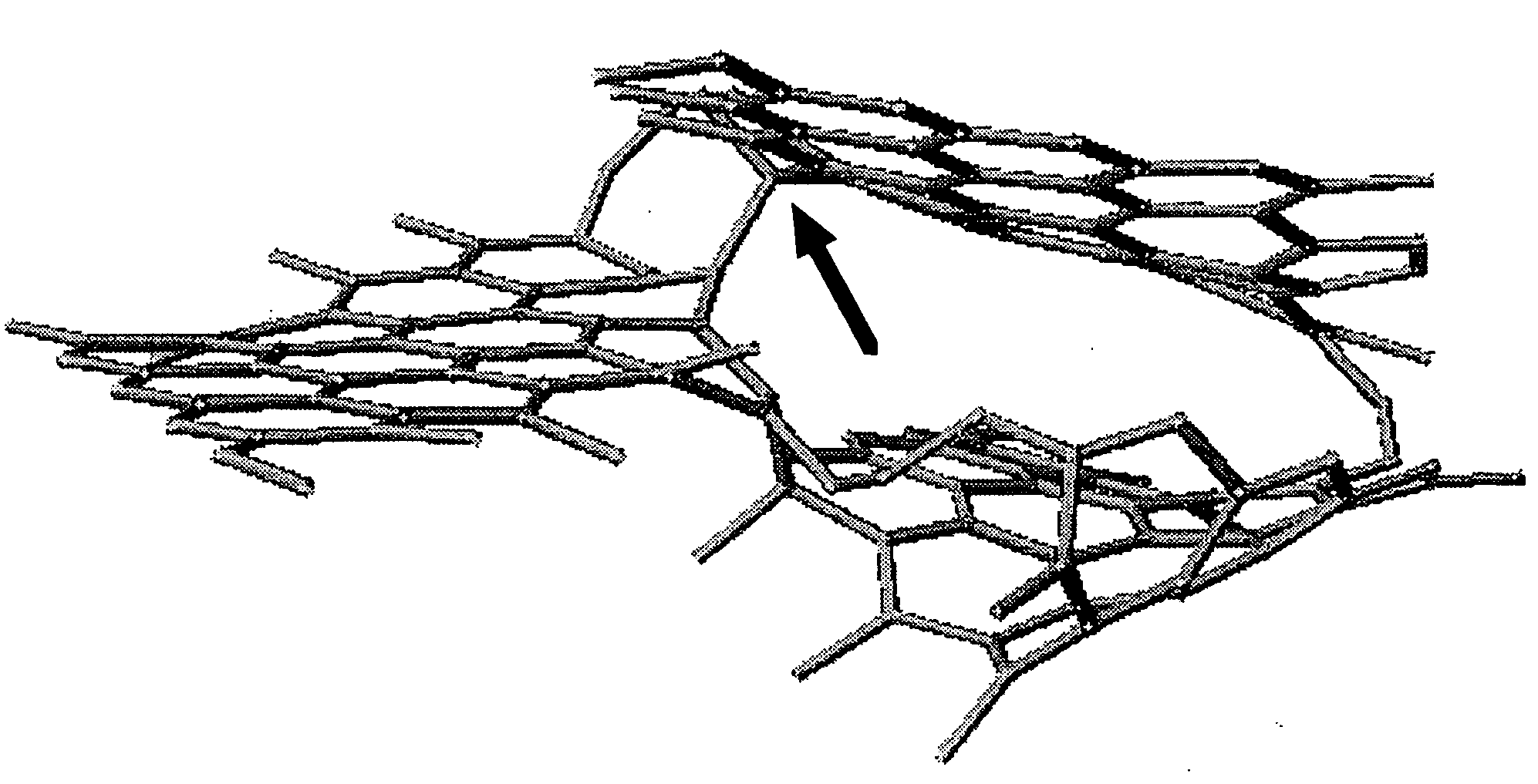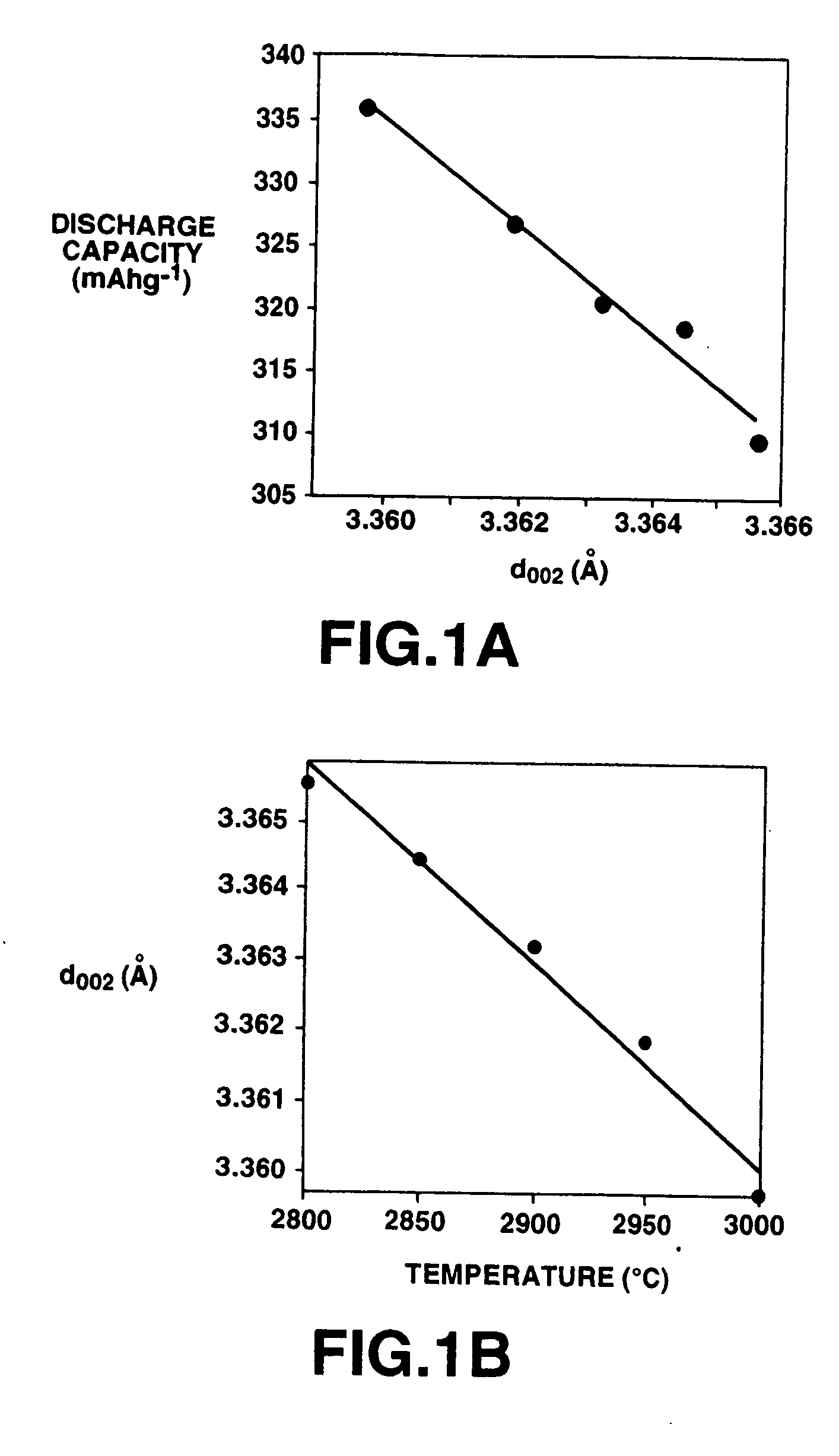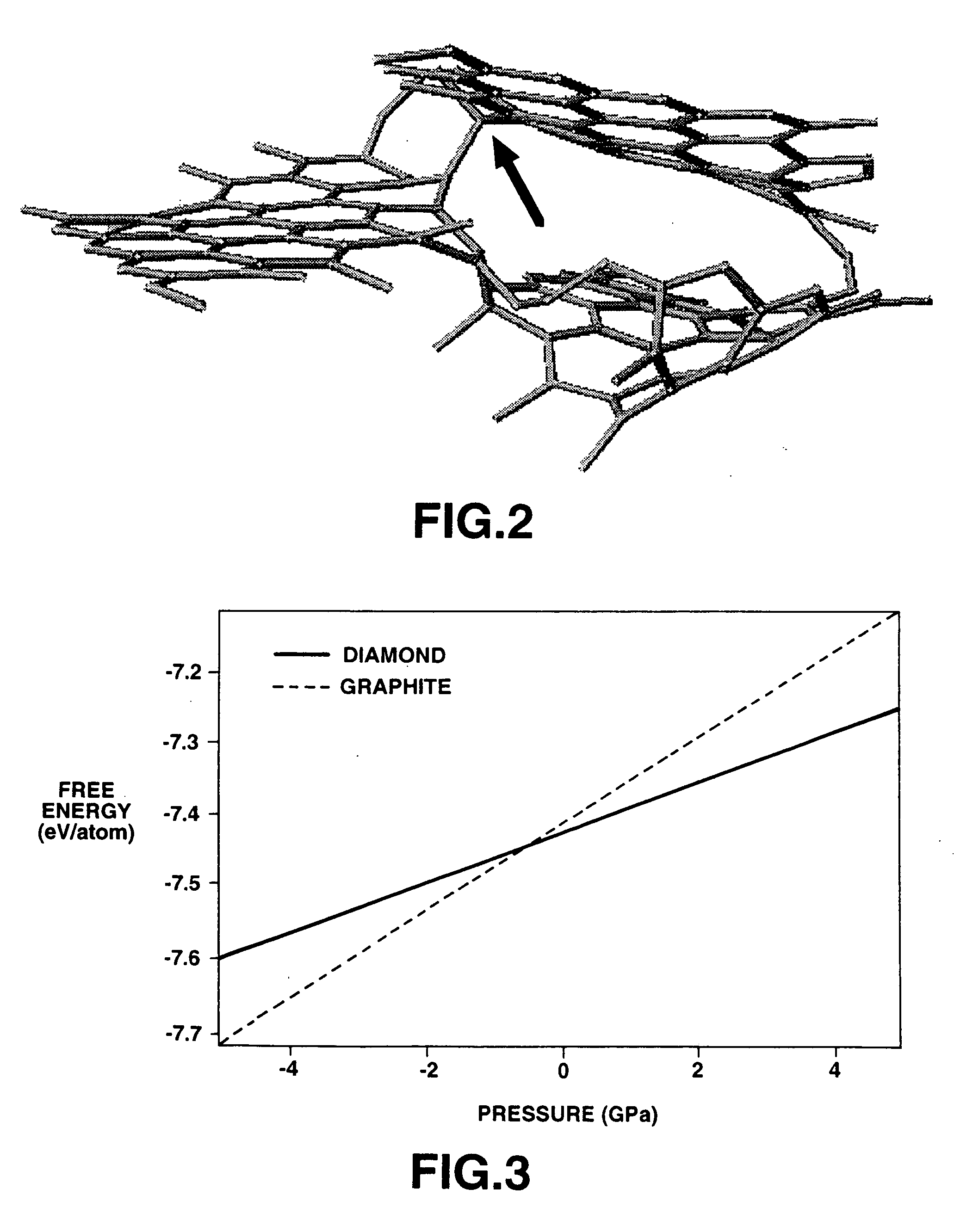Graphite powders suited for negative electrode material of lithium ion secondary battery
- Summary
- Abstract
- Description
- Claims
- Application Information
AI Technical Summary
Benefits of technology
Problems solved by technology
Method used
Image
Examples
example 1
[0120] The present Example 1 illustrates manufacture of boron-containing graphite powders having the looped closed structures of the present invention by the first method.
[0121] Using an impact crusher (“hammer mill μ-miser” manufactured by Fuji Powdal), the bulk mesophase obtained from coal tar pitch was pulverized for five minutes per 10 kg at an rpm of 7500. The resulting bulk mesophase powders were carbonized on heating at 1000° C. for one hour under an argon atmosphere for carbonization in order to produce powders of a carbon material. To these powders of the carbon material were added powders of B4C (boron carbide) having the size not larger than 45 μm in an amount of 0.01 to 6.5 wt % of B referred to the total amount of the addition product. The resulting mass was mixed together mechanically and the resulting powder mixture was heat-treated in an argon atmosphere for 30 minutes at a temperature of 2500 to 3000° C. for graphization in order to obtain graphite powders.
[0122] ...
example 2
[0127] The present Example 2 illustrates the manufacture of boron-containing graphite powders having the looped closed structures of the present invention by the second method.
[0128] The bulk mesophase pitch, obtained from the coal tar pitch, was pulverized, carbonized, admixed with B4C powders and graphizing-heat-treated in the same way as in Example 1 to produce graphite powders. The temperature for the graphizing heat treatment of 2500° C. was used.
[0129] The resulting graphite powders were subjected to oxidating heat treatment in the pure oxygen atmosphere at 700° C. for three hours followed by heat treatment in the Ar atmosphere at 1000° C. for five hours.
[0130] A high resolution electronic microscope photograph of the cross-section in the vicinity of the surface of the graphite powders from the oxidating heat treatment indicated that the looped closed structures as seen on the surface of the graphite powders (FIG. 7) were substantially completely opened to present a flat op...
example 3
[0142] Using the bulk mesophase, obtained from the coal tar pitch, and to which was added 1 wt % of B4C prior to graphizing heat treatment, graphite powders were produced by the first method, as in Example 1. The rpm of the crusher used for pulverizing the bulk mesophase, as a starting material, was set to 7500, with the pulverizing time duration being changed. The graphizing heat treatment was carried out at 2500° C. The B content of the produced graphite powders, sieved to 5 to 63 μm, the density of the interstitial planar sections of the closure structure, d002 and the specific surface area are shown in Table 2 along with the pulverizing conditions. The results of measurement of the performance of the negative electrode of these graphite powders, that is the discharging capacity and the charging / discharging efficiency, are also shown in Table 2. The discharging capacity and the charging / discharging efficiency were measured as stated in Example 1.
PUM
 Login to View More
Login to View More Abstract
Description
Claims
Application Information
 Login to View More
Login to View More - R&D
- Intellectual Property
- Life Sciences
- Materials
- Tech Scout
- Unparalleled Data Quality
- Higher Quality Content
- 60% Fewer Hallucinations
Browse by: Latest US Patents, China's latest patents, Technical Efficacy Thesaurus, Application Domain, Technology Topic, Popular Technical Reports.
© 2025 PatSnap. All rights reserved.Legal|Privacy policy|Modern Slavery Act Transparency Statement|Sitemap|About US| Contact US: help@patsnap.com



